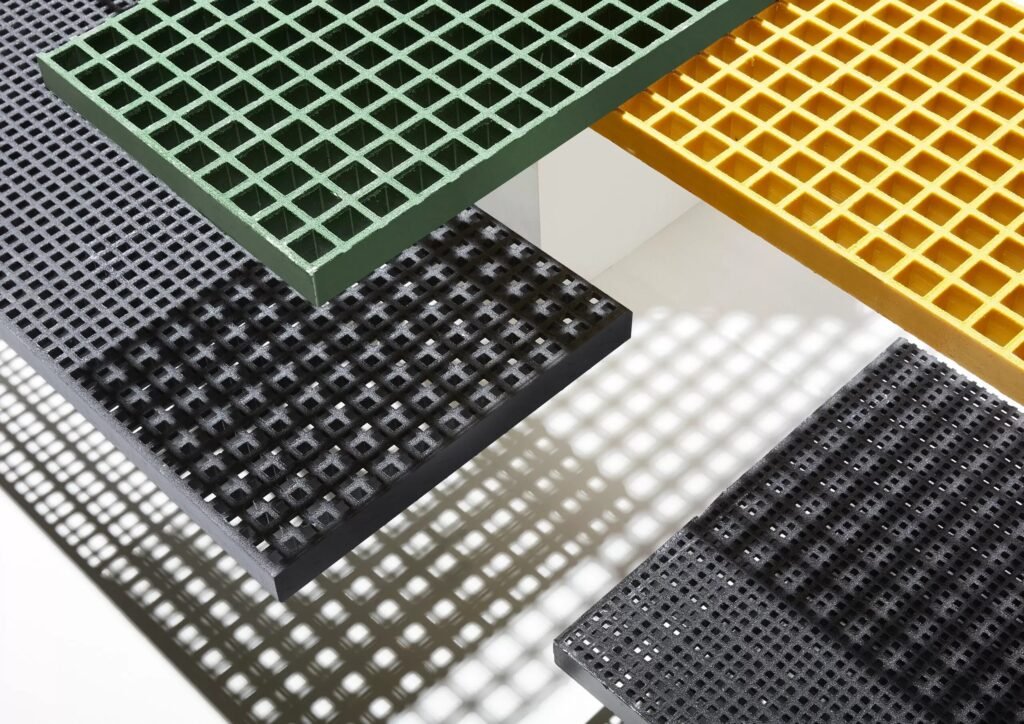The use of Plastic grating as a flooring solution is quickly gaining popularity in commercial and industrial sectors. It is suitable for chemical, wet, and outdoor environments because of its fiberglass reinforced plastic (FRP) Grating non-conductivity, durability, light weight, and thermal insulation. Safety and functionality are two key aspects that come into play during the installation of walkways, drainage covers, mezzanines, and even platforms.
A Step-by-Step Guide Towards an Easier Installation of Plastic Grating
Planning and Site Evaluation: Assess the area for installing plastic grating thoroughly as it is the first and most critical step. Something like:
Drainage Needs: Think about if the area or placement has the risk of accumulating water. Dimensions: Define the perimeter while noting any shapes, obstructions, or cutouts that need to be integrated.
Selecting the Proper Grating
Select a plastic grating suitable to your needs:
Open Mesh Grating: Most suitable for spaces where there is a requirement of drainage and airflow.
Solid Top Grating: Most suitable for spaces where spill containment or added grip is required.
Mini Mesh: Provides improved slip resistance for pedestrian areas.
Ensure that the chosen grating is suitable for the environment and complies with local safety regulations.
Preparation of the Substructure
Your grating requires a solid supporting structure. The substructure can comprise
Steel or Aluminum Frames: Perfectly suited for industrial use where heavy loads are involved.
Concrete Platforms: Most universally used for external or heavy-duty applications.
FRP Structural Shapes: Employed when corrosion- and conductivity-free qualities are the main concern.
Level with a spirit level
Free the surface from dust, grease, or debris. Pedestals or crossbeams can be fitted if necessary to provide support and adjustment of height level.
Cutting to Size
Plastic Grating panels are provided in standard sizes but usually require cutting to size. Be aware of the following:
- Utilize an angle grinder or a circular saw with a diamond-tipped cutting edge.
- Wear a dust mask and safety goggles.
- Mark cut lines carefully and double-measured.
- Cut curved or complex sections on a jigsaw or reciprocating saw.
- Deburr rough edges with a file or a sanding block after cutting to prevent injury and for a clean fit.
Securing the Grating Panels
Installation instructions
- Use stainless steel or FRP clips for non-corrosive purposes.
- Securely tighten bolts, but not overly tight since grating fracture can occur.
- A minimum of four clips to a panel and more where heavy loading is expected.
Sealing and Finishing
- Although not always required, the following finish details can improve performance:
- Fix anti-slip tapes or nosing strips for extra safety on edges.
- Seal joints in chemical-sensitive zones with epoxy sealing compound.
- Paint or stencil areas with safety colors if the code indicates (e.g., yellow for caution).
Checking the Installation
Conduct careful inspection to confirm the grating is:
- Level and in correct alignment
- Properly fastened to the structure
- Wobble-free, gap-free, and lifting-edge-free
- Smooth and safe cut sections
- Test grating under specified loads to validate strength and stability.
Post-Installation Maintenance Tips
While plastic grating is maintenance-free, some maintenance actions will ensure longevity:
Regular Cleaning: Use a hose or pressure washer to clean.
Visual Inspections: Inspect for cracks, loose fasteners or clips, and corrosion every few months.
Prevent Impact Loads: While tough, plastic grating can become damaged if hit with a hard, forceful blow.
Quick Fixes: Replace damaged panels as soon as possible to ensure safety.
Mistakes to Be Avoided
Incorrect Load Calculation: Faulty grating that has inadequate bearing capacity causes failure.
Poor Fastening: Failure to use clips or the wrong clips creates dangerous surfaces.
Poor Cutting Blades: Ineffective or improper blades create rough ends and poor fitting.
Disregarding Safety Equipment: Always put on PPE while cutting or fitting grating to prevent injury. Read This
Installation of plastic grating in your building is a possible project if you have good planning, tools, and expertise. You might be replacing an old industrial factory or providing drainage in a residential complex, but plastic grating presents unmatched value when it comes to strength, security, and resistance to extreme weather conditions.
By doing the step-by-step process described above—from site inspection and cutting to fastening and inspection—you can have an effective and strong installation. Make sure always to follow manufacturer instructions and safety measures in a bid to produce the best result out of your plastic grating system.







